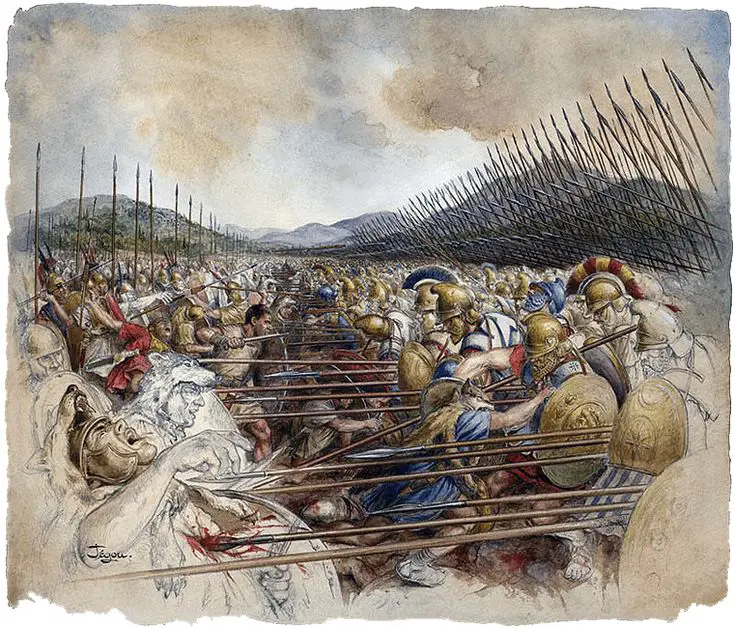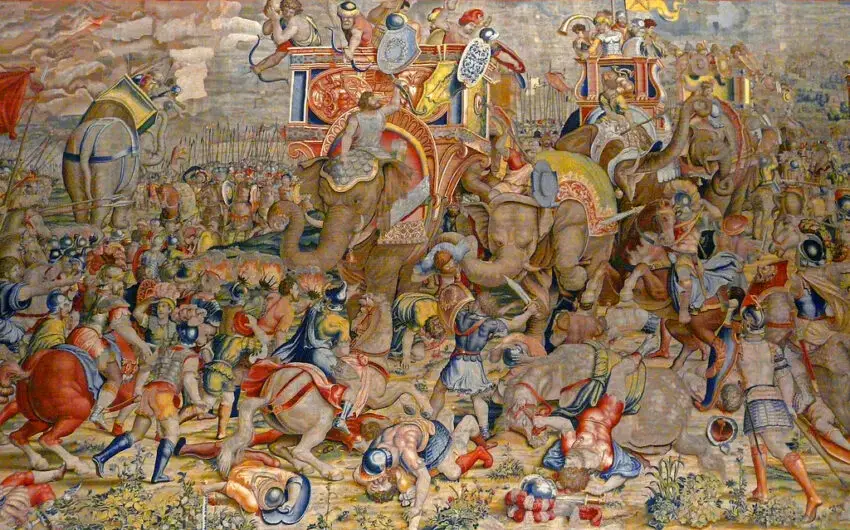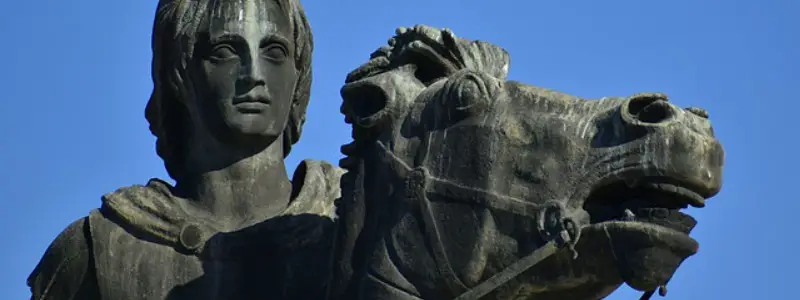Greek Phalanx vs. Roman Legion
Table of Contents
The Greek and Roman warriors are remembered for their power, their strength and their ability to strategize. The epic battles between the two of them, as well as other parties and them, have most certainly changed history. But who would win in a battle between a Roman Legion and a Greek Phalanx? Keep reading to find out!
Strategy
The Greek Phalanx typically acted as a single, dense mass, whereas the Romans split themselves into several “maniple” with gaps between them – usually 30-35 maniples per legion. They used a “three-line” system – the youngest warriors in the front (Hastati), the men in their prime in the middle (Principes), and the veterans at the back (Triarii). The Greeks’ heavy armor, coupled with this tendency towards dense formations, increased their staying power in the shoving matches. On the other hand, however, it made it harder for them to maneuver, especially on rough terrains, and they could only operate as a single giant unit.

The Roman legions didn’t have those problems – the maniples were very flexible and while they weren’t as dense as the Phalanxes, the low number of people in maniples allowed for complex formations, making them more adaptable for various kinds of terrains. The three-line system allowed for additional flexibility – front-liners could be substituted by Principes in order to get some rest, for instance. They were also real professionals, led by a centurion – the soldiers were trained from a young age.
Marching and Physical Training
The first thing the soldiers were taught to do, was to march. The historian Vegetius tells us that it was seen as of greatest importance to the Roman army that its soldiers could march at speed.
Any army which would be split up by stragglers at the back or soldiers trundling along at differing speeds would be vulnerable to attack.
Hence right from the beginning the Roman soldier was trained to march in line and to keep the army a compact fighting unit on the move.
For this, we are told by Vegetius, during the summer months the soldiers were to be marched twenty Roman miles (18.4 miles/29.6 km), which had to be completed in five hours.
A further part of basic military training was also physical exercise. Vegetius mentions running, long and high jump and carrying heavy packs.
During the summer swimming was also a part of training. If their camp was near the sea, a lake or river, every recruit was made to swim.
Weapons
The dense Phalanx required the Greeks to employ the tactics of the kind during battles. One of those tactics was known as “othismos” – roughly translated as “the push of shields” – and basically involved the soldiers pushing their shields into the backs of their fellow soldiers in front of them in order to make the Phalanx even denser. This tactic worked really well in a shoving contest, and it served its purpose – to push the enemy backwards and shatter their own formation to pick them off later as they fled. However, it left a lot to be desired, particularly in terms of protection – flank and rear were practically exposed.

The main weapons that the Greek Phalanxes employed in addition to their shields were pikes and spears. They were usually arranged into walls, making it easy to keep the enemy at a distance. However, they don’t appear to be as practical as they were intimidating – the density of the formations made it hard to maneuver them swiftly in a battle. The Roman legions, on the other hand, preferred short swords, javelins, large shields and light chain armor. These weapons allowed for more defense advantage at a short range than the Greeks had. However, the lower density combined with shorter swords did mean that the Romans’ shoving power was not as great as that of the Greek Phalanxes.
Weapons Training
Next in line, after the training for marching and fitness, came the training of handling weapons.
For this they primarily used wickerwork shields and wooden swords. Both the shields and the swords were made to standards which made them twice as heavy as the original weapons. Evidently it was thought, that if a soldier could fight with these heavy dummy weapons, he would be twice as effective with the proper ones.
The dummy weapons were at first employed against heavy wooden stakes, about six foot high, rather than against fellow soldiers. Against these wooden stakes the soldier trained the various moves, strikes and counter-strikes with the sword.
Only once the recruits was deemed able enough in fighting against the stakes, were they assigned in pairs to train in individual combat.
This more advanced stage of combat training was called armatura, an expression which first was used in the gladiatorial schools, which proves that some of the methods used in training soldiers was indeed borrowed from the training techniques of gladiators.
The weapons used in the armatura were, though still of wood, of the same, or similar weight as the original service weapons.
Weapons training was deemed of such importance that weapons instructors generally received double rations, whereas soldiers who didn’t achieve adequate standards received inferior rations until they had proven in the presence of a high-ranking officer that they had attained the demanded standard. (inferior rations: Vegetius states that their wheat rations were substituted with barley)
After completing the initial training with the sword, the recruit was to master the use of the spear, the pilum. For this the wooden stakes were put to use again as targets. The pilum used for practice was, once again, twice the weight of the regular weapon.
Vegetius notes that weapons training was given such importance that in some places roofed riding schools and drill halls were built to allow for training to continue throughout the winter.
Who would win? Case in point
In order to reach a definite conclusion as to who would win in a battle between a Greek Phalanx and the Roman legion, let’s look at some real-life historical examples. The Romans lost the Battle of Heraclea in 280 BC against a kinsman of Alexander the Great – the very man who came up with the idea of a Phalanx in the first place. However, there is strong evidence that suggest that the only reason the Romans had lost this battle is because the elephants got involved in it and Roman legions had no experience fighting them.

The Roman legions had gone on to win the Battle of Pydna in 168 BC due to their superior ability to maneuver on a rough terrain, and the Battle of Zama in 202 BC which marked the end of the Second Punic War. The latter was arguably won by the Romans due to their superior professionalism and experience, as well as ability to use their troops more efficiently than a single dense mass of people. The Mithridatic Wars were also won by the Romans, with Mithradates eventually choosing to restructure his military forces Roman style.
To conclude, while both the Greek Phalanx and the Roman legions were powerful in their own ways, the Roman legions would be most likely to win the battle between them
What do you think?
Do you agree with my conclusions? Who do you think would win between a formation that uses the techniques designed by Alexander the Great himself and a legion that chooses maneuverability over brute force? Do let us know!
